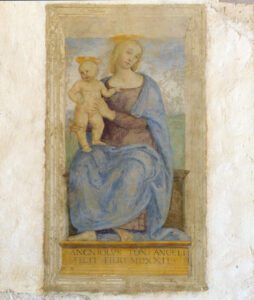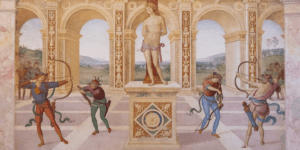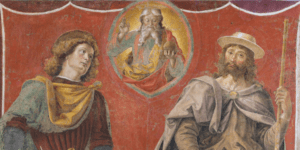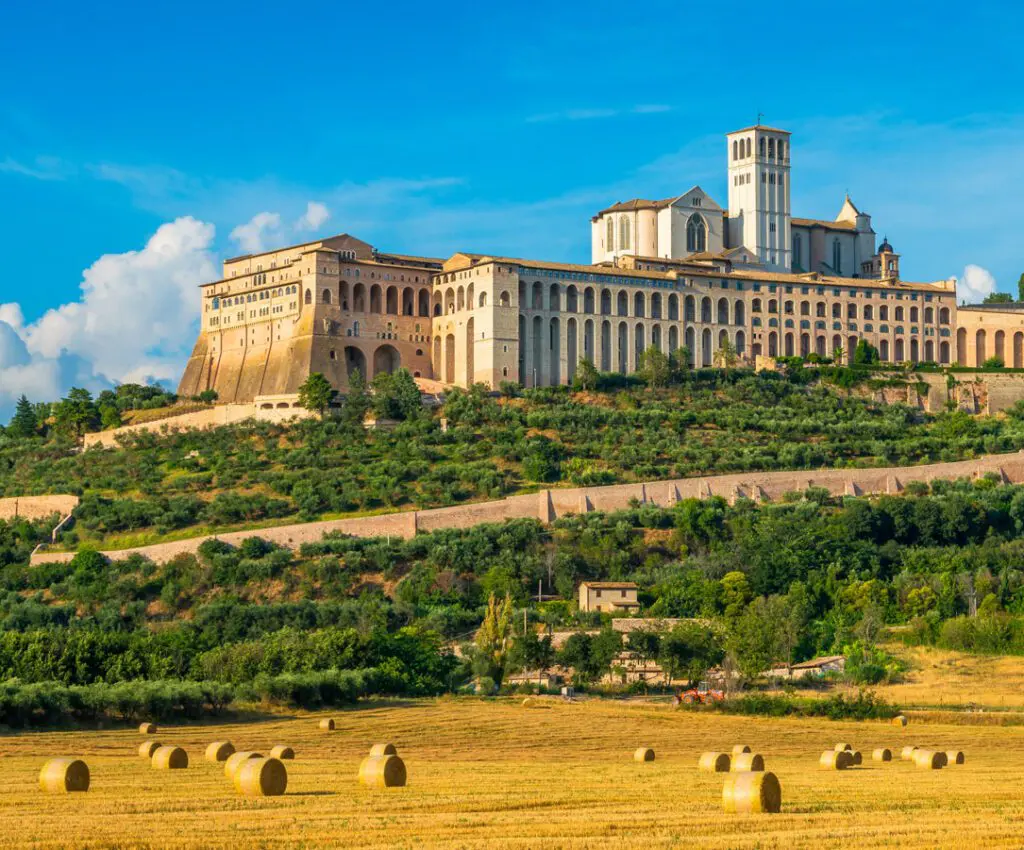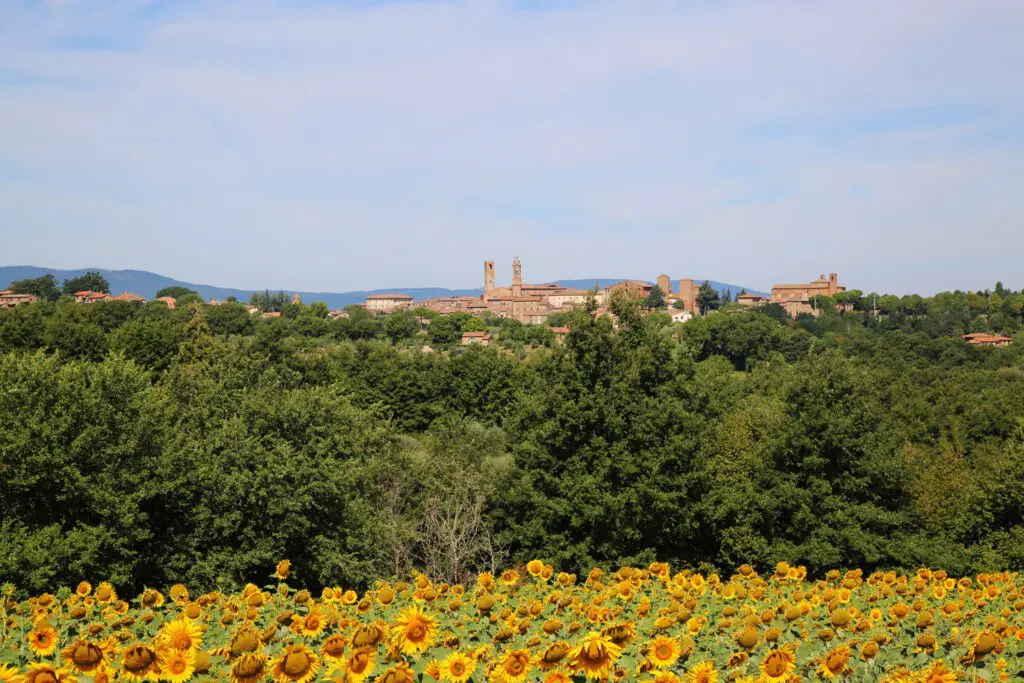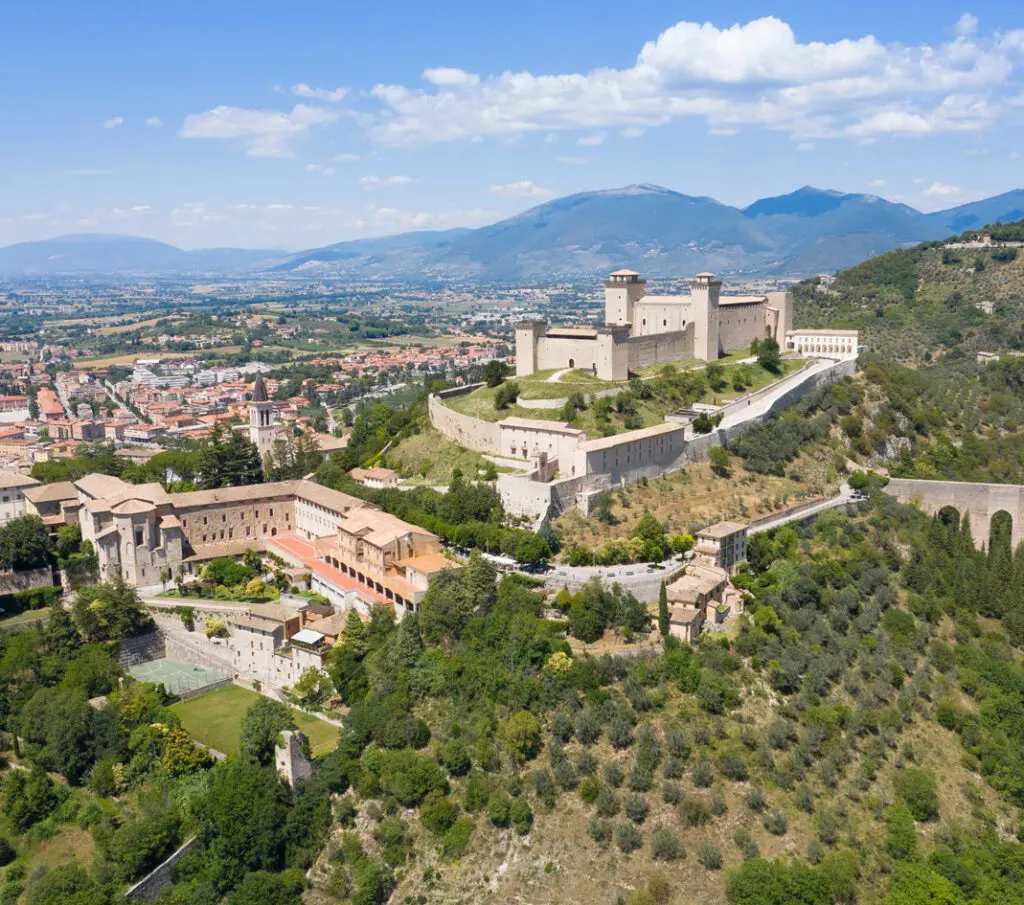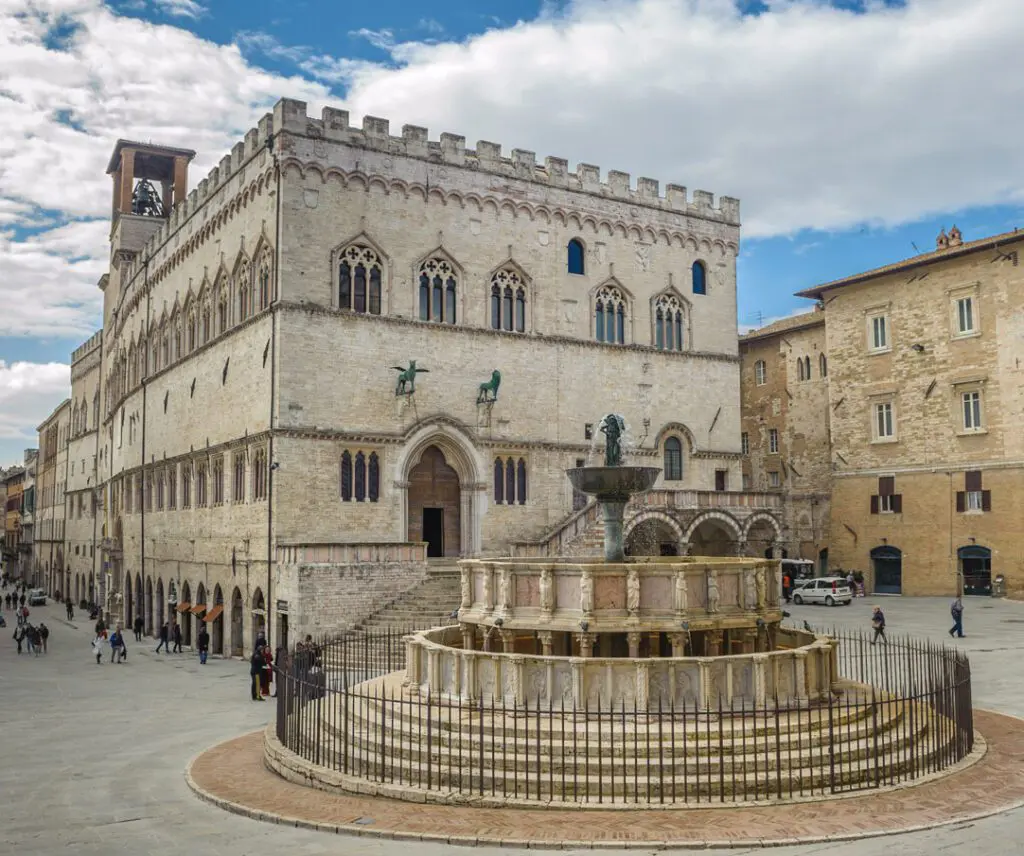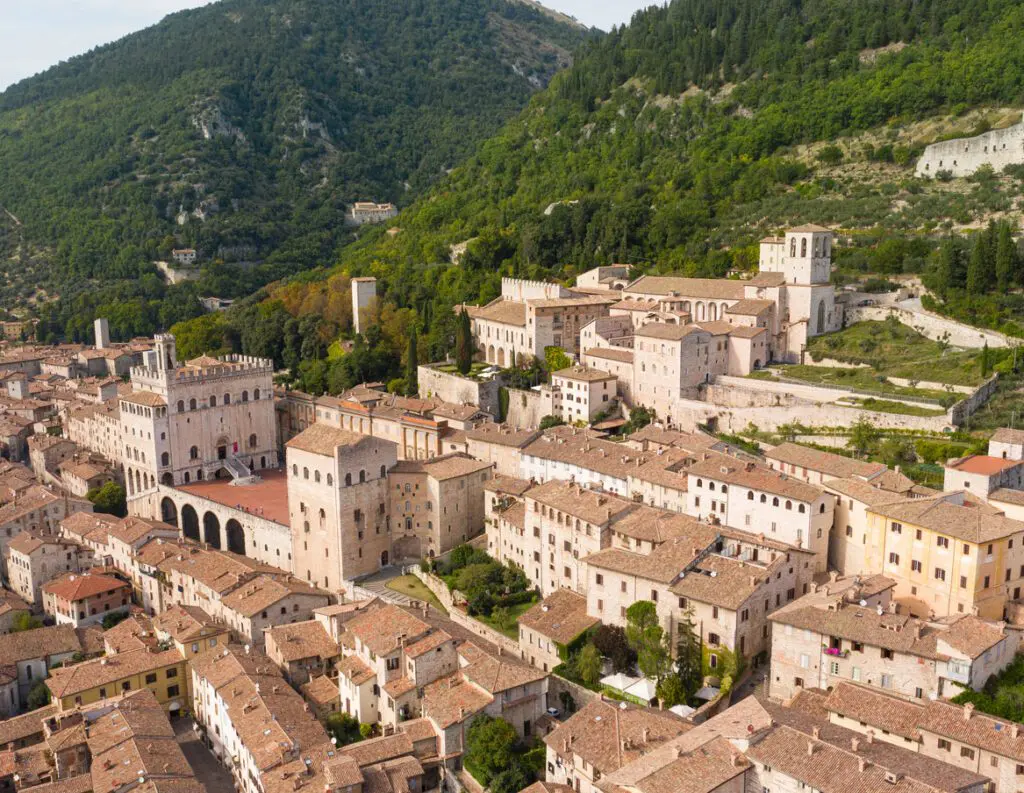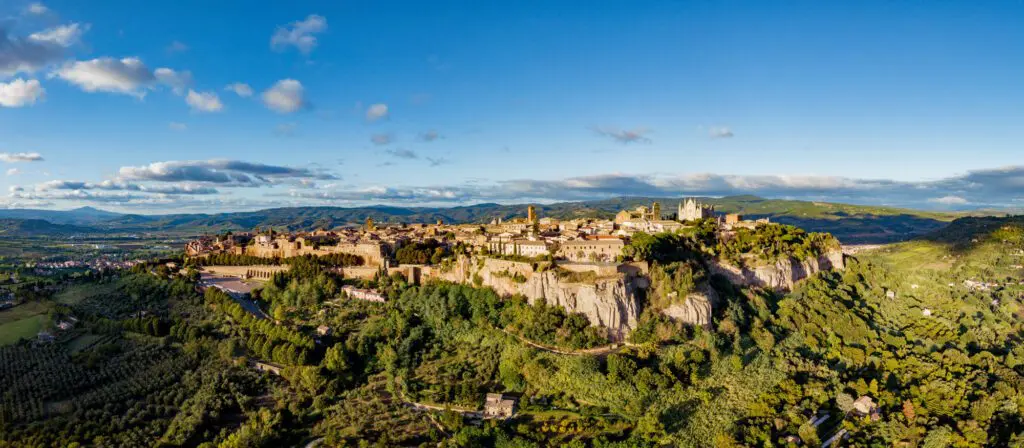The Altarpiece of Mary’s Assumption, a Perugino panel in Corciano
In the Church of the Assumption of Mary in Corciano, a small Medieval town in Umbria, an altarpiece on the same subject can be admired. Made by Perugino to decorate the high altar, it still looks very well preserved after more than five centuries; and it has remained in the very church for which it has been designed.
The Assumption Altarpiece was commissioned to Perugino by the whole community of Corciano, as shown by the contract that both parties signed on December 18, 1512. The document deals with an altarpiece worth 100 florins, partly to be given the artist as a deposit, partly to be paid within eight months after its completion.
The main scene: Virgin Mary and atmospheric perspective
The altarpiece, set inside a rich, gilded frame, includes the main panel in which Virgin Mary’s Assumption to Heaven is depicted, and two predellas (altar steps) below, featuring the Annunciation to Mary and the Adoration of the Shepherds.
The Assumption scene is divided into two different, though connected levels. In the upper part Mary, enclosed within a so-called “almond” of light, rests her feet on the clouds. She is encircled by the angels who escort her toward heaven, and looks toward “us.” In the lower part, the Apostles pray while turning their eyes upwards in amazement.
A landscape with green hills and a blue sky makes up the background. As he so often used to, Perugino employs an atmospheric perspective in order to get a natural rendition of the depth of space, using darker colors for the faraway hills and the upper section of the sky.
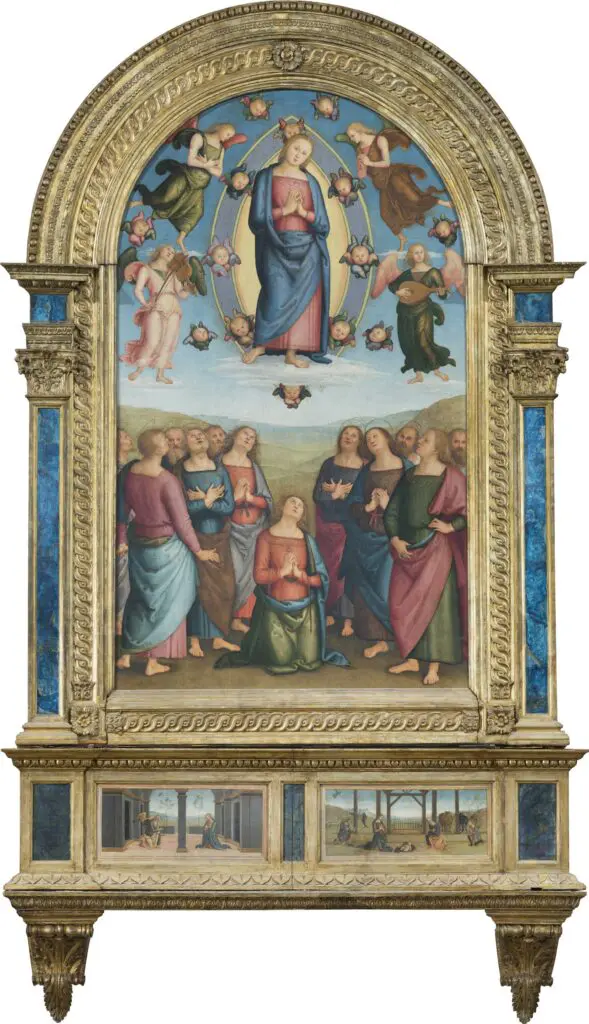
Predellas in central perspective
In the predellas below the main panel, Perugino employed a central perspective and positioned the characters symmetrically. The Annunciation (on the left) is set inside a vaulted building that opens onto a natural landscape. The Adoration of the Shepherds (on the right) is set in the countryside.
A recurring pattern
The formal structure of this painting recalls Perugino’s works for the Basilica of the Annunciation to Most Holy Virgin Mary in Florence (1507) and the Naples Cathedral (1506). This once again reveals the fact that he tended to copy/paste the subjects which had proved more successful among his clients.
